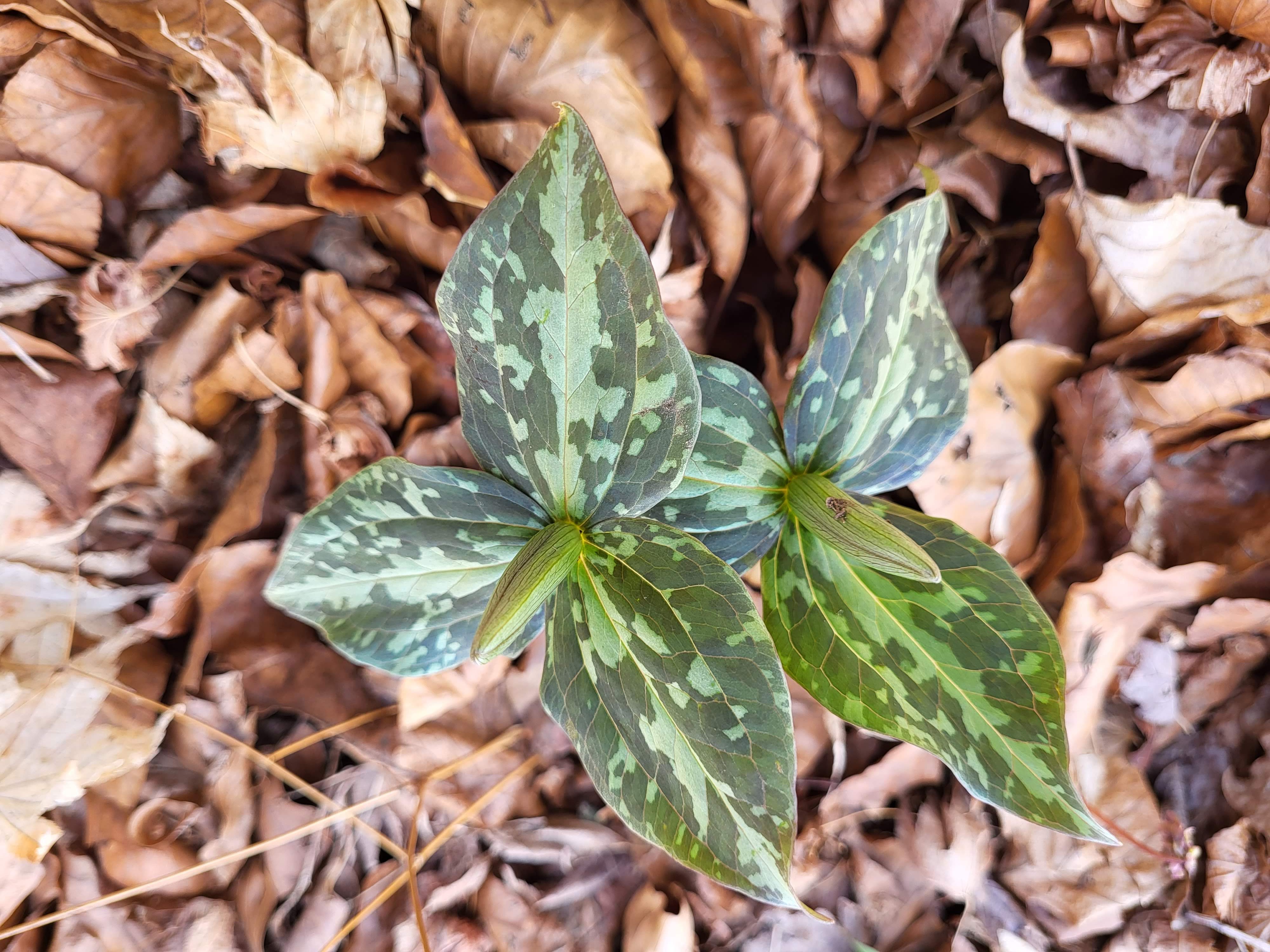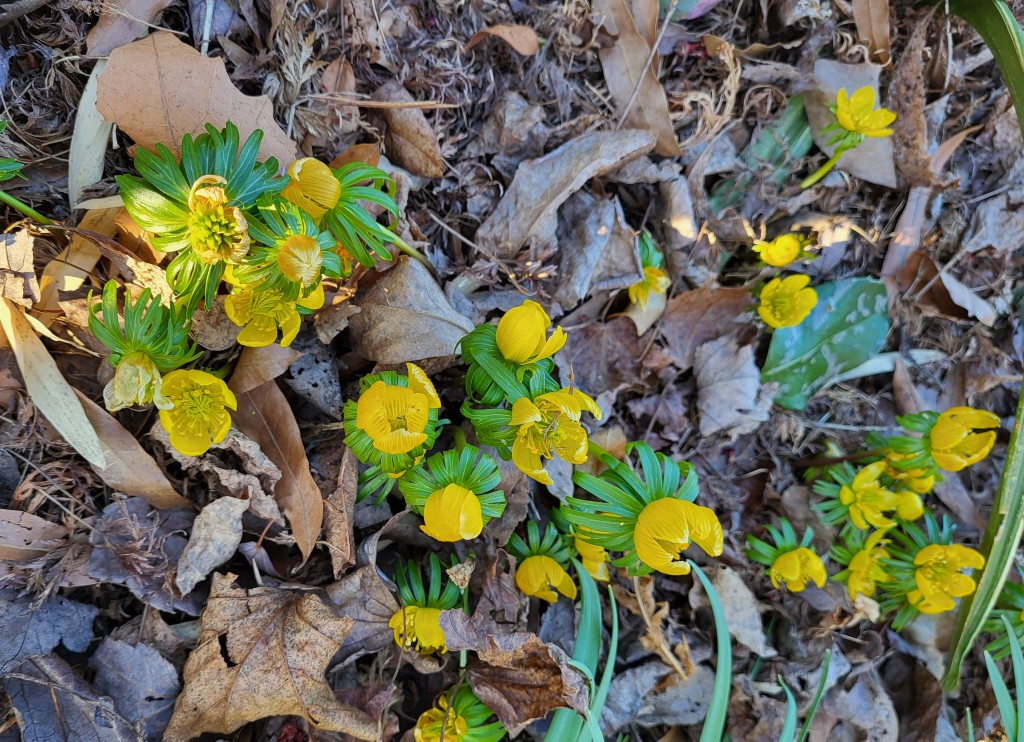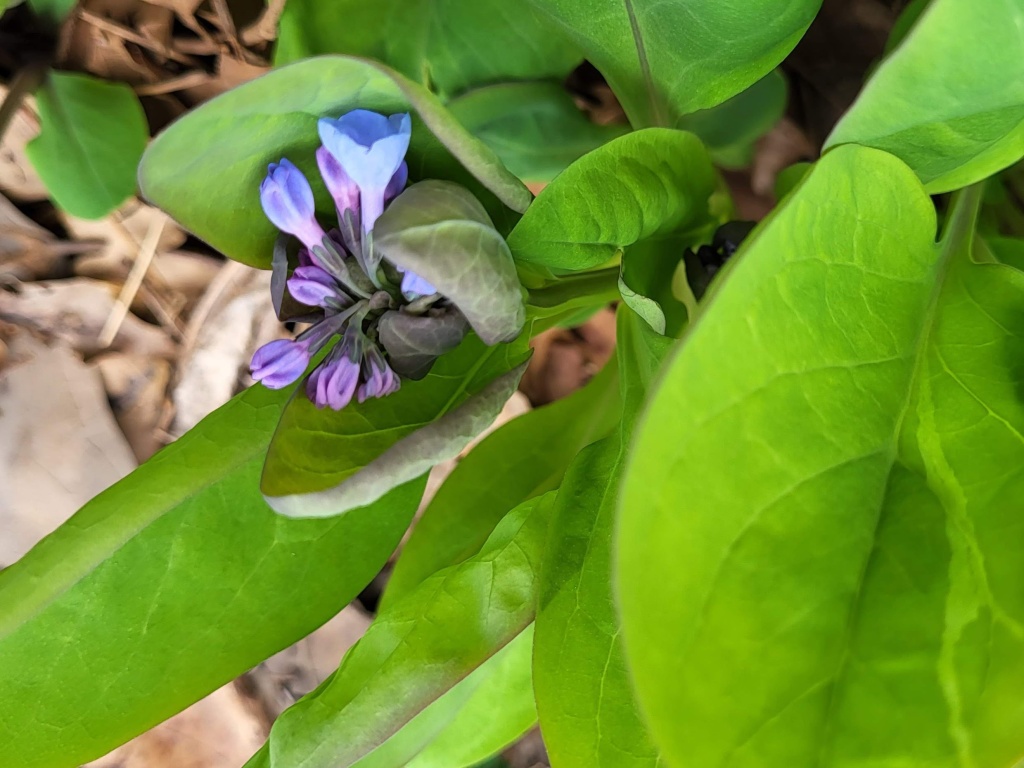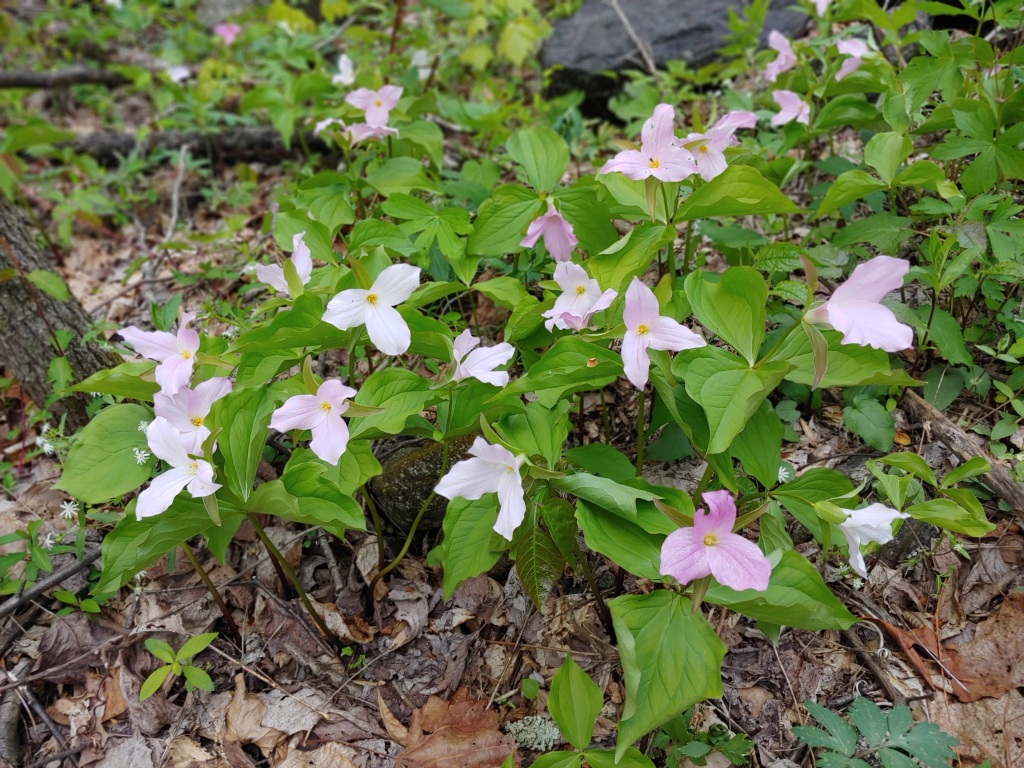The first of the trilliums (below) is up, ten days earlier than a year ago. While temperatures have turned cooler in recent days, there were several inches of snow a year earlier that delayed flowering. Ups and downs are the norm for March, but so far the garden has been breaking early and freezes have not been severe enough to cause any problems.

Ideally, I would plant many dozens of a variety of trilliums rather then the few I’ve spotted here and there. I noticed a year ago that some newcomers popped up in unexpected spots, so that’s good news that I hope will continue. As I start to see spring ephemerals in nearby forests I’m reminded of the sadly miniscule quantities of bloodroots, hepaticas, and toothworts in the garden that are hardly noticed. No wonder I must get out on the trail.
I’m uncertain, either the winter aconites (Eranthis hyemalis, below) by the front walk have finally begun to spread, or I planted more. Which, I don’t remember, but that’s not unusual. But finally, there’s more than a scattered flower or two, and last year the few were barely seen as they went beneath the snow and faded by the time the pile beside the walk melted.

The bright yellow patch is not widespread. Maybe that’s coming next year. But, this should be a good location, and if they’ve finally started to seed perhaps there’ll be many more a year from now.

As I see Virginia bluebells a week from peak bloom locally (above), I’m reminded that I’ve failed miserably trying to get them established in the garden. The partially shaded, damp rear garden should be perfect, but I’ve failed here more than once. Probably, I’ll try again. While they like damp, perhaps I was planting in wet, so maybe moving them just a few feet will make a difference.

My favored spot for trilliums is nearby, along the Appalachian Trail at seventeen hundred to two thousand feet elevation (above), with flowering typically beginning the first week of May. So, planting even a few in my lower elevation garden for the earlier flowering is worth the effort. There’s no time advantage to planting bluebells that are in forests just up the road except that the damp ground in the lower, rear garden should be ideal, and now I’m stubbornly motivated to make them work.
Thanks for the photos of trilliums. Based on one of your posts last year, I ordered and planted 12 bare-root trilliums, knowing that they would need another season, probably, to take hold. I don’t see any signs of them emerging yet. I planted them under American Hollies and humongous Norway Spruce trees against my back fence. I suspect my lawn service might have pulled them when they pull the weeds up a couple times a year. I wish garden centers sold baby trilliums; I’d buy lots of them and put them all around my yard, and I’d put stakes to show my landscapers not to touch them. I wonder why garden centers don’t sell them? In the meantime, I’m going to buy lots of hellebores from the garden centers, which I also learned from your posts. The ones I planted last year are just beautiful!
Trilliums take several years from seed to flowering size, so in large production nurseries that supply garden centers this makes them prohibitively expensive to grow in quantities. While several trilliums popped up i my garden a week ago, another group is just poking above ground. I can’t remember where all are planted, but ones that are more shaded will be later.
Most spring ephemerals, such as trilliums, prefer deciduous shade so they get the winter sun while trees are bare. The shade of evergreens might slow trilliums more since the ground is not heated as much.
Thanks so much for your response. I will purchase additional bare root trilliums and plant them around my 8 large Frans Fontaine Hornbeams. Thanks! They’ll get the winter sun under those trees.
While I’ve had some of my trilliums spread, they are slow to do so, so I recommend planting them in groups, not as a series of single plants. By groups, I suggest 3-5 as close as 6 inches apart to make a good show. Since they disappear by summer you can plant late appearing perennials such as hostas or deciduous ferns in the same area.
Ok, I will do that. Thanks!